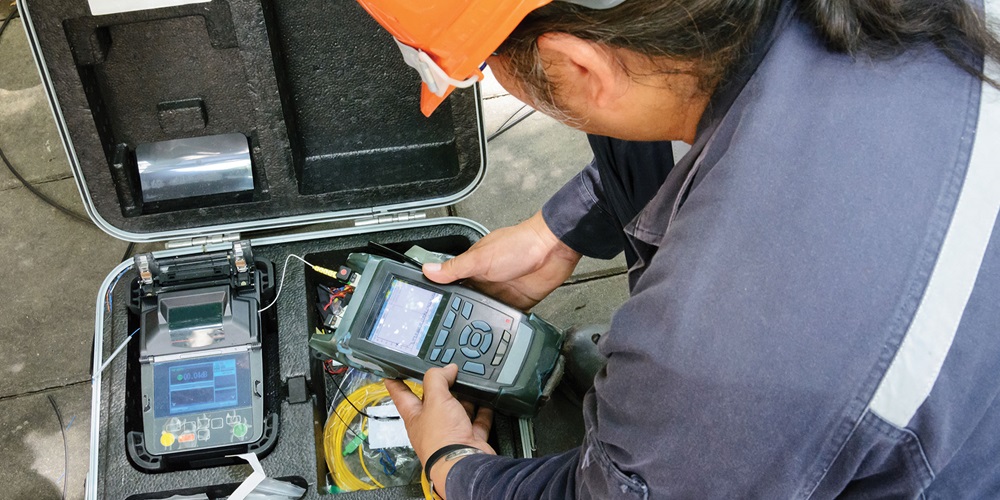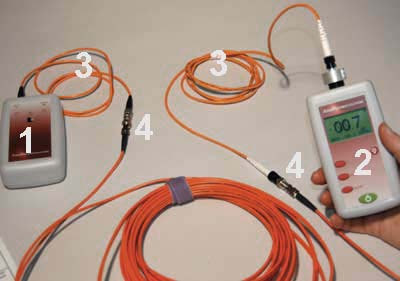Fibre testing equipment ensures precise measurements for various applications.
Wiki Article
Revealing the Trick Utilizes of Optical Fibre Examining for Effective Data Transmission
In the world of modern interaction, optical fibre testing arises as a necessary technique for optimizing information transmission. Understanding the diverse applications of optical fiber testing welcomes a much deeper exploration into its crucial duty in shaping the future of data interaction.
Relevance of Optical Fibre Screening
The significance of optical fiber testing can not be overemphasized, as it serves as an essential element in guaranteeing the dependability and performance of information transmission systems. In an age where high-speed interaction is vital, any shortages in fiber optics can result in significant data loss and lowered performance. Extensive screening methods are important to verify the stability and performance of optical cable televisions.Checking enables for the identification of issues such as micro-bends, macrobends, and splice losses that could hinder signal quality. Furthermore, it supplies understandings into the total depletion and transmission capacity abilities of the fibre, guaranteeing that the network fulfills particular functional criteria. Regular screening not only enhances system efficiency however additionally extends the life-span of the infrastructure by determining possible problems prior to they intensify into costly failures.

Kinds Of Optical Fiber Tests
Different kinds of optical fiber tests are carried out to make sure the efficiency and integrity of fibre optic networks. These examinations can be categorized right into numerous essential types, each offering a specific objective in evaluating the stability of the fiber.First, Optical Time Domain Reflectometry (OTDR) is a prominent examination that recognizes mistakes, entwines, and connectors within the fiber. By sending pulses of light and examining the reflected signals, specialists can identify problems along the fiber's length.
2nd, insertion loss tests assess the amount of signal loss when light passes through connectors or splices, which is essential for maintaining network efficiency.
Third, return loss tests determine the amount of light mirrored back towards the source, supplying insights right into the top quality of connections and possible sources of interference.
Additionally, continuity tests make sure that the fiber course is complete, enabling service technicians to validate that the fibre is intact with no breaks. optical fibre testing equipment.
Last but not least, aesthetic mistake locators use visible light to recognize breaks or serious bends in the fibre, aiding in fast troubleshooting. Collectively, these tests form a thorough technique to maintaining optimal efficiency in fiber optic networks.

Applications in Network Maintenance
In modern telecoms, reliable network upkeep relies heavily on optical fibre screening to determine and fix concerns promptly. Routine testing makes sure that the network operates at optimal performance degrees, minimizing downtime and boosting user experience.One of the primary applications of optical fibre screening in maintenance is the detection of faults, such as breaks, flexes, or inappropriate connections. Techniques like Optical Time Domain Reflectometry (OTDR) allow specialists to locate these issues precisely and assess the top quality of the fibre link. Furthermore, loss testing verifies the honesty of the optical course, guaranteeing that signal attenuation continues to be within acceptable restrictions.
Regular maintenance screening also aids in safety nets, identifying potential troubles prior to they intensify into significant failings. This proactive strategy can save companies both time and economic resources. Additionally, during upgrades or growths, optical fibre screening guarantees that new setups integrate effortlessly with existing infrastructure.
Enhancing Information Transmission Reliability
Effective network maintenance with optical fiber testing not just addresses immediate problems but additionally plays a considerable role in improving data transmission integrity. By identifying mistakes, measuring signal loss, and assessing the general problem of fiber optic wires, testing ensures that prospective problems are corrected prior to they intensify into significant disruptions.Regular optical fibre testing, such as time-domain reflectometry (TDR) and optical time-domain reflectometry (OTDR), enables specialists to determine the exact locations of breaks, bends, or connector issues within the network. This proactive method not only decreases downtime yet additionally optimizes the efficiency of information transmission by making certain that the robotic vision pathways for signals are clear and working efficiently.
Moreover, testing aids in validating adherence to market requirements and specifications, which is critical for maintaining the stability of information circulation. By making sure that each link meets called for thresholds for loss and quality, companies can reinforce their self-confidence in the dependability of their information networks.
Ultimately, spending in detailed optical fibre screening not only improves data transmission reliability but additionally sustains the long-term operational effectiveness of communication infrastructures.
Future Trends in Fiber Screening
Emerging innovations are poised to transform fibre testing, leading the method for improved efficiency and precision in information transmission diagnostics (optical fibre testing equipment). As the need for faster net and greater data transfer continues to climb, the combination of innovative devices such as expert system (AI) and artificial intelligence (ML) is set to change typical fibre screening methods. These modern technologies will make it possible for predictive upkeep and automated fault detection, significantly reducing downtime and boosting network integrityAdditionally, the fostering of Internet of Things (IoT) tools will help with real-time monitoring of fiber networks, enabling prompt recognition of efficiency problems. This shift in the direction of proactive management will certainly minimize disturbances and enhance information circulation.
Additionally, innovations in optical time-domain reflectometry (OTDR) and new testing requirements will improve the precision of measurements, ensuring that information integrity is maintained throughout the transmission process. The development of 5G technology additionally necessitates the growth of more innovative fibre screening methods to support its high-speed needs.
Final Thought
In conclusion, optical fibre testing is crucial for preserving reliable data transmission within communication networks. Regular screening not just guarantees conformity with market criteria yet likewise helps with proactive maintenance, inevitably adding to the lasting dependability and performance of fiber optic systems.Report this wiki page